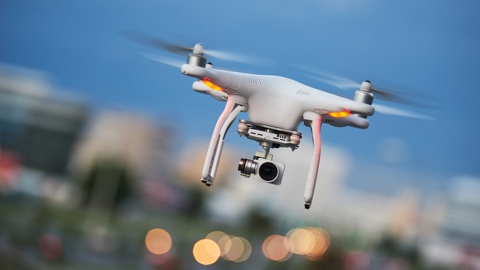
Engineers at the École Polytechnique Fédérale de Lausanne (EPFL) in Switzerland have developed a flexible quadcopter drone. Unlike other drones which are based on the principles of origami, these quadcopters were also inspired by the material properties of insect wings, creating a hybrid origami drone.
“Most origami structures are made of rigid laminated materials and rigid joints (i.e., inextensible joints made of polyimide or nylon), which leads to limitations,” says Stefano Mintchev, a postdoctoral researcher at EPFL. “Rigid origamis are fragile, prone to tear, and easily fail when overloaded during collisions.”
The drones impact resistant flexibility comes from an extended elastomeric membrane – mimicking the soft joints of insect wings – which is surrounded by rigid tiles – similar to the rigid cuticles of insect wings.
“The challenge of strategically tailoring rigidity and softness in fold-able structures is mastered by insects,” says Mintchev. “[Their] evolved origami wings are composed of rigid tiles of cuticle connected through soft resilin joints.”
Origami-inspired architecture is still utilized as a balance needs to be achieved between the rigidity to withstand the aerodynamic forces within the drones flight and the flexibility to absorb damage. The team is also working on an origami gripper that can be used for rigid grasping but softens to avoid overloading of the manipulated objects.
“The current trend in robotics is to create softer robots,” said Dario Floreano, the director of the EPFL’s Laboratory of Intelligent Systems, “that can adapt to a given function and operate safely alongside humans.”
The full paper was published in the journal, ScienceRobotics.
